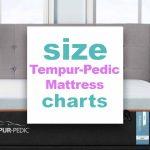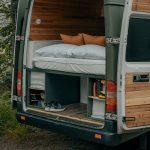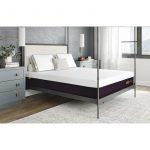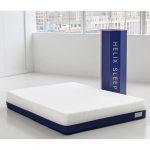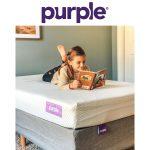RV Mattress Size Chart – Ultimate Buying Guide
Sleeping in an RV or a camper van may not be the most exciting aspect of camping, but it is critical since sleep deprivation influences driving. Your RV or camper’s standard mattresses may not be comfortable enough for a good night’s sleep. So, changing that old stock mattress you got when you bought your RV is one of the greatest and simplest changes you can make. Because there are various types and sizes of RV mattresses, Use the below RV mattress size chart.
Looking for Pillow sizing or Bed sheets sizes? check the links
RV Mattress Size Chart
With many types and sizes of RV mattresses, it is essential to check the RV mattress size chart while shopping so that you can get a perfect-fitting RV mattress.
Here is an example of an RV mattress size chart;
| RV Mattress Size | Dimensions (Width x Length) | Description | |
| INCHES | CM | ||
| RV Twin | 28’’ x 75’’, 40”x 80′ | 71×191 102×203 | A mattress that adapts to varied sleeping spaces |
| Bunk | 28″ x 75,” 30″ x 75,” 30″ x 80,” 34″ x 75,” 35″ x 79,” | 71×191 76×191 76×203 86×191 89×201 | It is ideal for cross-country travel since it provides the most versatile options |
| Truck | 35′ x 79’’ 42′ x 80′ | 89×201 107×203 | Are ideal for tall persons |
| RV Full | 53″ x 75″ 54″ x 75″ 55″ x 75’’ | 135×191 137×191 140×191 | Are durable and convenient |
| King | 72″ X 75″ 72″ x 80″ 76″ x 80″ 72″ x 84″ | 183×191 183×203 193×203 183×213 | It suits you if you are exceptionally tall or want to share a bed on your camping vacation. |
| Queen | 48″ x 75″ 48″ x 80″ 60″ x 74″ 60″ x 75″ 60″ x 80” | 122×191 122×203 152×188 152×191 152×203 | You may find it in three sizes: standard queen, three-quarter queen, and short queen. |
How to Take Measurement for RV Mattresses
Mattresses for RVs come in a variety of sizes. It’s critical to get precise measurements to ensure that your custom-made mattress will fit in your RV. Make the following measurements:
You’ll have to measure twice to find the best-fitting mattress for your RV. First, measure the total sleeping area (the frame or platform your old mattress is resting on). Make sure you take measurements for your mattress’s length, depth, and breadth. Second, measure your current mattress’s length, depth, and breadth once more. Use your existing mattress dimensions to help you picture your options with a new mattress. Remember to examine the entire area surrounding the bed.
Remember to check to see if there are any obstacles in the way of you getting a thicker mattress, such as a curve in your RV’s rear wall. Another limiting component is headspace. Check all the areas above the bed for any obstacles that would prevent you from getting a thick mattress, such as a bend in your RV’s rear wall. While thicker mattresses provide a more pleasant sleeping environment, headroom might be a constraint. If getting out of bed is difficult, you’ll need to balance your requirement for wiggle space and the depth of comfort and support while shopping for a new mattress.
Sleep Profiles and Influence on Rv Mattress Choices
When looking for the most incredible RV mattress, the same concerns apply to other mattresses. You’ll want something that fits your favorite sleeping position, offers proper contouring and support, and regulates your body temperature, so you stay relaxed and comfortable.
Here are some guidelines for each type of sleeper;
RV Mattress for Side sleepers
Side sleepers want a soft mattress that cradles and contours their body, keeping their spine upright and relieving strain on their shoulders and hips. Because of their contouring characteristics, memory foam mattresses—or hybrid mattresses with a memory foam layer—are popular choices for side sleepers.
Side sleepers require pressure point alleviation for their shoulders, hips, knees and equal weight distribution. Most average-sized side sleepers like a medium firmness level because it provides proper support and contouring comfort. Sleepers with a smaller body type—those who weigh less than 130 pounds—tend to feel more like they’re sleeping on top. Light sleepers should choose a mild firmness level to offer enough pressure point alleviation.
Rv Mattress for Back sleepers
Back sleepers require complete body support, including correct spinal support. Back sleepers should prevent severe mattress sinkage, which can cause back pain. For sleepers under 250 pounds, a medium firmness level is recommended—a medium will give adequate support for the shoulders and lower back while cradling the spine’s natural arch.
Sleepers who weigh over 250 pounds should choose an actual firm mattress. Again, the objective is to give enough support for the complete body, including the natural arch of the spine, while considering the mattress’s increased displacement owing to a larger body type. Remember that back sleepers like a firm mattress but still require contouring— the mattresses should include some top comfort layer, such as quilting, to relieve pressure points.
Rv Mattress for Stomach sleepers
Stomach sleepers should search for an even firmer mattress than a side or back sleeper. Proper spinal alignment and neck support are difficult for stomach sleepers. They require an appropriate weight distribution while preventing excessive spine curvature. A medium mattress is best for those who weigh less than 250 pounds since it gives a flat sleeping surface and provides enough support. Sleepers weighing over 250 pounds should choose a firm mattress, guaranteeing a flat sleep surface while also accounting for the mattress’s larger displacement due to a bigger body type.
Rv Mattress for Combination sleepers
Most combination sleepers sleep on their sides and stomachs to some extent. While sleeping, they may go to the extremes of each posture or even to their backs. A medium mattress is best for combination sleepers of all weights because it allows for appropriate spinal alignment during their most common sleep positions and movements while also providing enough pressure point relief for places like shoulders and hips.
While some mixed sleepers may roll to their stomachs occasionally, a hard mattress is strongly avoided. When picking the correct pillow to match the most prevalent sleep type, combination sleepers should consider the body position they’re in when they start to sleep and when they wake up. Other sleeper types include weight back sleepers, lightweight stomach sleepers, weight side sleepers, heavyweight back sleepers, lightweight back sleepers, lightweight side sleepers.
Body Types
One of the most ignored elements is your weight when selecting the ideal sleep solution. An RV mattress that isn’t firm enough might cause difficulties like lower back pain in the morning due to incorrect spinal alignment. With terrible back pain, it’s tough to enjoy your next big trip. Remember that the heavy you are, the more you benefit from a thicker, firmer mattress. It does not imply that all low-profile mattresses are suited for lighter people, but it is strongly advised that plus-size people choose a more substantial sleeping surface.
Main Sizes and Dimensions of RV Mattresses
There are as many RV mattress sizes as different types of RVs, meaning it is very likely that a Thor RV will not be compatible with a standard Winnebago mattress size. The sizes listed here are some of the most popular.
Twins Size Mattress
RV twin sizes are available in a range of shapes and sizes. Depending on the style of bed in your camper, they might measure anywhere from 28 x 75 to 40 x 80 inches. They can be positioned as bunk beds or side by side in some cases. They have the exact dimensions as your twin beds at home. The standard measurement for this is 38 x 75 inches.
Most RVs and smaller campers, particularly pop-ups, include twin beds. These might also be a good substitute for tables that convert to beds. A substitute mattress would be a fantastic fit instead of lying on bumpy cushions, as long as you have the storage area for it while not in use. Twin mattresses should suffice if you’re seeking a mattress that can adapt to diverse or smaller sleeping places.
Trucks Size Mattress
Truck-size mattresses, measuring between 35 inches by 79 inches and 42 inches by 80 inches, may be seen in semi-truck cabs. Tall people will benefit from truck-size beds. While it is safe to choose a twin-sized mattress for your RV vehicle due to space constraints, you should consider a truck-sized mattress if you are taller than average.
RV Bunk Size Mattress
RV bunk mattresses are like twin mattresses, but their proportions vary depending on the camper’s layout. It is available in sizes ranging from 28 to 75 to 35 x 75 inches. You may find bunk beds in many family-friendly RVs, such as Jayco travel trailers.
Many types of campers will have different bunk configurations. If you can’t find your bunk size for whatever reason, you might require one of the truck bed mattress sizes. These are 35 x 79 to 42 x 80 inches in size.
RV Full Mattress
Full RV mattresses are equivalent to a double bed. They are 54 x 7 inches in size. The only difference between them and regular mattresses is that they’re one -inch wider. Depending on the model, you may find them in most RVs. The fold-out sofas are included in several of them.
Three Quarter Mattress
A three-quarter mattress is seventy-five percent the breadth of a queen mattress. They’re 48 inches broad and 75 inches long.
Three-quarter mattresses are ideal for RVs with narrow or unusually shaped interiors, and they are broad enough to accommodate two younger children.
Queen-Size Mattress
The RV queen mattress is 60 by 80 inches, the same size as a regular one. Because it’s challenging to find enough space for an 80-inch mattress in an RV, these mattresses are less common than the short queen. You won’t notice the difference between a short and regular queen if you’re under 6 feet tall.
Short Queen Size Mattress
A queen mattress’s measurements are 60 by 80 inches. So, while the width of the RV short queen is retained, its length is reduced by 5 inches. It is the first RV bed size that can accommodate two people comfortably.
While the three-quarter and full are theoretically large enough for two, they give less sleeping space per person than a child’s cot, so you’ll undoubtedly feel confined sleeping on them. The short queen provides a full 30 inches of breadth per person while remaining less in length than the conventional queen.
King-Size Mattress
If your camper has enough room, RV king-size beds are an excellent choice for a large family. These are 72 inches by 75 inches to 72 inches by 80 inches in size. A spouse and a child, or four youngsters, may comfortably fit in an RV king. Some pop-up campers come with two king beds on either side, allowing a large family to stay together.
Short King Mattress
A short king mattress, also known as an Eastern king, is narrower and shorter than a conventional king-size bed. Short king beds are 72 inches wide by 75 inches long, 4 inches narrower, and 5 inches shorter than an Eastern king bed.
Because small king beds are enormous, you’ll need a big camper to fit them in. A couple or three to four children can sleep comfortably on a short king mattress.
Main Types of RV Mattresses
Let’s have a look at the many types of RV mattresses available;
Memory foam
The memory foam mattress, another hypoallergenic choice, provides the most fantastic cushioning of all the material alternatives since it molds so closely to the curve of your body, cradling pressure spots while also giving support. Some varieties of memory foam keep body heat.
If you’re camping in a chilly place, being encased in a warm, comfy foam might keep the chill at bay for the entire night. If you’re camping in a hot area, though, you can end up sweating all night. Gel memory foam is one way to combat heat retention. It contains tiny and cooling gel microbeads blended into a conventional memory foam mattress.
Depending on the size and brand, memory foam mattresses can cost anywhere from $400 to over $1000.
Gel foam mattresses
The gel foam mattresses are ideal for campers who live in tropical climates and do not have access to an air conditioner. Gel foam mattresses are like memory foam mattresses, except they contain gel microbeads that absorb and release body heat. They’re most known for keeping people cold while aiding in treating ailments that can be eased with cool pressure. They are around the same price as memory foam, if not a little more.
Latex Mattresses
Natural latex is manufactured from rubber tree sap and is an excellent balance between memory foam and innerspring mattresses because it provides some of the cradling and support of memory foam while also providing some of the cooling power and responsiveness of innerspring. Because latex mattresses resist dust, mold, mildew, pollen, and dust mites, they’re ideal for camping in areas with many allergies.
An RV latex mattress should be your first choice if you want a weightless, very durable mattress that responds to movement. They are often more expensive than memory foam, ranging from $900 to $1500.
Innerspring Mattresses
A network of springs is linked together to support your weight in an innerspring mattress. These springs are cushioned by a top layer of foam, cotton, or other material. These mattresses aren’t as supportive or cushioned as latex or memory foam, but they offer one significant advantage: they’re cool.
If you have no air conditioning in your RV or travel trailer, the circulation provided by the coils may keep you far cooler than any form of foam. If you’re camping in a humid location, though, the coils may rust and lose tension more quickly, resulting in sagging.
A mattress topper layer will be included on most RV innerspring mattresses. It will act as a cushion between you and the springs. Unfortunately, weather changes may cause the springs to condense, so be cautious.
Although innerspring beds are inexpensive, ranging from $250 to $600, investing in a more comfortable one may be worthwhile.
Air Mattresses
While most of the mattresses’ weight is determined by the padding, the RV air mattress is on another level.
The RV air mattresses are similar to home air mattresses, but they have been redesigned to be better and more durable. These will set you back between $1100 and $2000. These allow you to control the stiffness on either side so that both you and your spouse can be comfortable without fighting about it.
Because of leaking air, they are only suggested if you only use them once in a while.
Hybrid Mattress
Hybrid beds have a pocketed coil support system and a 2-inch layer of latex or memory foam. Hybrid mattresses are long-lasting, supportive, and bouncy. A hybrid bed is attractive if you prefer foam beds but don’t like how hot they may become. Despite having an outer foam layer, the coils of a hybrid bed enable better ventilation through the mattress.
Hybrid beds may be cumbersome and expensive, costing between $1200 and $2000 because of their complicated structure.
Foam Mattresses
They are standard in almost every RV and camper. While foam mattresses do not always give the appropriate comfort level, they can allow you to enjoy camping or cross-country journeys on a budget. There are breathable dust-resistant RV foam mattresses personalized to your needs and keep allergies at bay if this is the case.
Popular mattress options you might want to consider for a comfortable night include green tea memory foam mattress, Bear RV mattress, Brooklyn bedding aurora hybrid mattress, Rv King mattress. Always make a point of looking at a couple of mattress stores to compare the common mattress sizes before you finally make the purchase.
Key Factors to Consider When Choosing RV Mattresses
When purchasing an RV mattress, four crucial elements to consider are:
Weight
While you might not think about weight when purchasing a mattress, it’s critical for RV beds since every ounce counts.
Because the load weight is crucial when towing a travel trailer or driveable RV, weight and size matter for all components in an RV. The weight of most RV mattresses is from 50 to 75 pounds. However, this might vary depending on the size and kind of mattress chosen.
When deciding on the size and kind of material, keep your weight in mind. A king-sized premium memory foam mattress, for example, will weigh more than a queen-sized polyurethane foam mattress.
Budget
The cost of a product is determined by many aspects, including its quality, size, materials, and personalization. If you’re looking for your first RV and have the option of purchasing one with an upgraded mattress, it may be a better value to spend a little more upfront rather than paying to replace the mattress later.
Size
Almost all RVs feature a sleeping space. However, some are smaller or shorter and lower profile than a regular mattress. The typical RV mattress dimensions are 60 inches by 75 inches by 80 inches, differing from standard home mattress dimensions.
You’ll find that your area falls anywhere between a Queen and a King-size after measuring it. If that’s the case, you’ll want to hunt for an RV-specific choice that has specified specifications. On the other hand, some RV models provide room for standard-sized beds.
Materials
Standard-sized and RV mattresses are available in a range of materials. The most popular and firmest type of mattress is made of low-cost polyurethane foam. They typically come with the RV. If you want to spend lots of time in your RV or if getting a good night’s sleep is essential to you, it’s worth investing in more supporting material. Gel, innerspring, memory foam and natural latex are examples of these materials. Consider a gel mattress if you expect to spend most of your Rving time in warmer locations. This substance is also more supportive than polyurethane foam, with the added benefit of being cooler.
Innerspring mattresses comprise many coils and are thus often more supportive, whereas memory foam mattresses equitably transfer weight evenly, which can be essential depending on the type of sleeper you are. Natural latex is also comparable to memory foam. However, it is more robust due to its rubber component and longer lifespan.
Other factors worth looking at include motion transfer, mattress companies, price ranges (retail price), body weight, base layer, firmness options, warranty (e.g 10-year warranty, 15-year warranty), hybrid construction, all-foam construction, air chambers, mite resistant, average weight, sleep spaces, financing options, motion isolation, radius corners (always measure radius corner), and personal preferences among others.
Frequently Asked Questions
Will A Queen-Sized Mattress Fit In A Minivan Or SUV?
However, depending on the make and type of the vehicle, queen mattresses may occasionally fit into a minivan or an SUV. Queen mattresses cannot be transported in a conventional automobile. Most SUVs, can accommodate queen mattresses. But it won’t always be possible for the mattress to lie flat. In general, a queen mattress may only be placed diagonally within a minivan. However, some minivans won’t have a hatch or rear door opening big enough for the mattress to pass through.
Our Conclusion on the RV Mattress Size Chart
Whether you’re a full-time camper or go camping with your family now and then, you want to sleep well every night to wake up feeling rejuvenated. More mattress sizes are available for a comfortable night of sleep in your RV than you may imagine, from standard queen mattresses, and medium-firm mattress to gel memory foam mattresses and all in between.
Before you go out and buy any recreational vehicle mattress, double-check that it will fit in your camper. Some campers, especially pop-ups, can’t have it too thick since it won’t shut, and you can’t have it too close to the ceiling. When pricing and selecting products, keep in mind storage and how frequently you travel.
Picture in this post RV mattress sizing by Clay Banks on Unsplash
Related Mattress size charts
- Blanket sizes chart : blanket sizes and dimensions in inches & cm
- Tempur-Pedic Mattress Size : What sizes TempurPedic comes in ?
- Casper mattress size: What sizes do Casper Mattresses come in?
- Queen Box Spring Size Guide with Mattress and Bed Comparison
- Sweetnight Mattress size and dimensions (easy size charts included)
- Pillow size and dimensions (with size chart included)
- RV Mattress Size Chart – Ultimate Buying Guide
- Crib Mattress Dimensions
- Birch Mattress Sizing guide
- Leesa Mattress Dimensions guide
- Nolah Mattress Dimension Guide
- Helix Mattress Dimension Guide
- Tuft and Needle Mattress Size Chart
- Saatva Mattress Size Chart
- Nectar mattress sizing Guide
- Purple Mattress size
- International mattress size chart
- Room Size for beds and mattresses


